Last Updated on September 2, 2024
When I first learned that you can make coffee from whole beans, with no grinder at all, I was intrigued.
I thought surely the flavor would be watered down. It would take hours. I might even waste a morning’s cup of coffee beans.
But I did some research, and I learned a few things. Then I tried it.
It works.
How to Brew Coffee From Whole Beans
What You Need
First, check to make sure you have all the supplies:
- boiling water
- small saucepan
- 1 pint mason jar
- spoon
- mug
- strainer
- whole bean coffee
Then, start brewing! Here’s how I did it:
Step 1: Measure your beans
I put three-quarters of a cup of coffee beans into my mason jar.
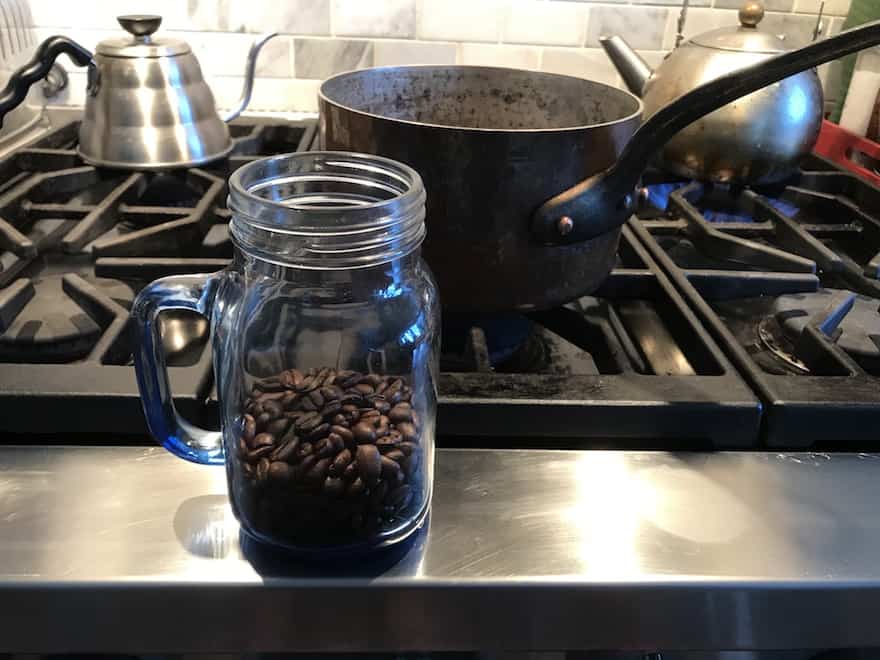
Step 2: Top up with hot water
I filled my jar about three-quarters full with hot water, just off the boil.
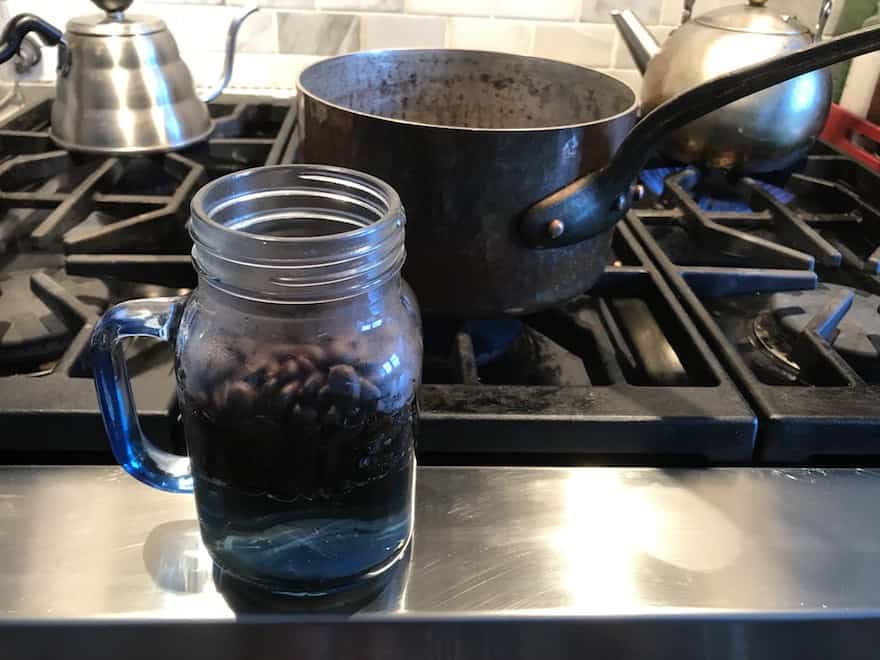
Step 3: Immerse jar in simmering water
I placed the jar in the saucepan and filled the pot with water so that the water level in the saucepan matched the water level in my mason jar.
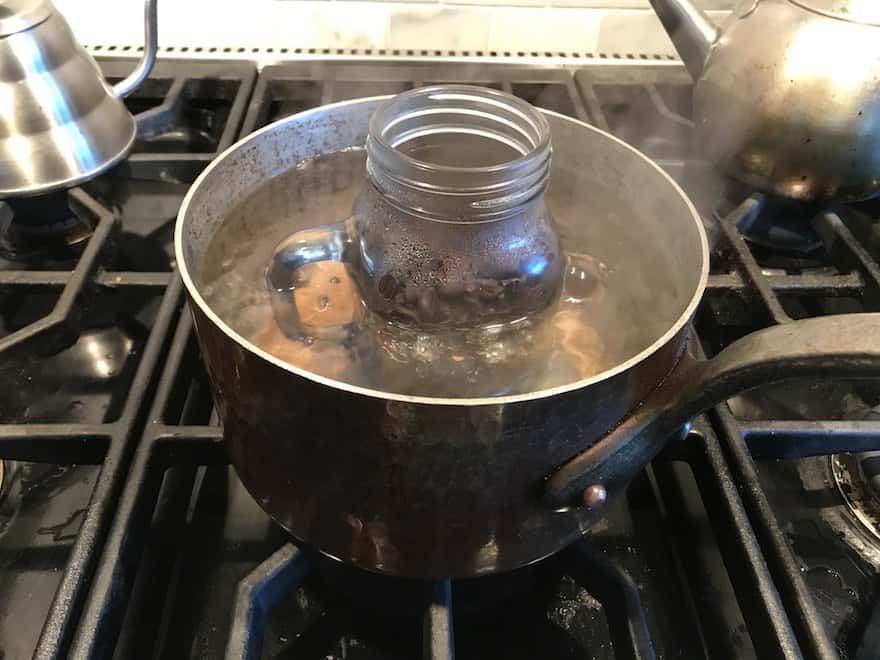
Step 4: Simmer for an hour, stirring occasionally
I started simmering the waters. While I waited for my coffee to brew, I got back into bed. I wrote in my Morning Pages book. Then I came down to give the beans a stir.
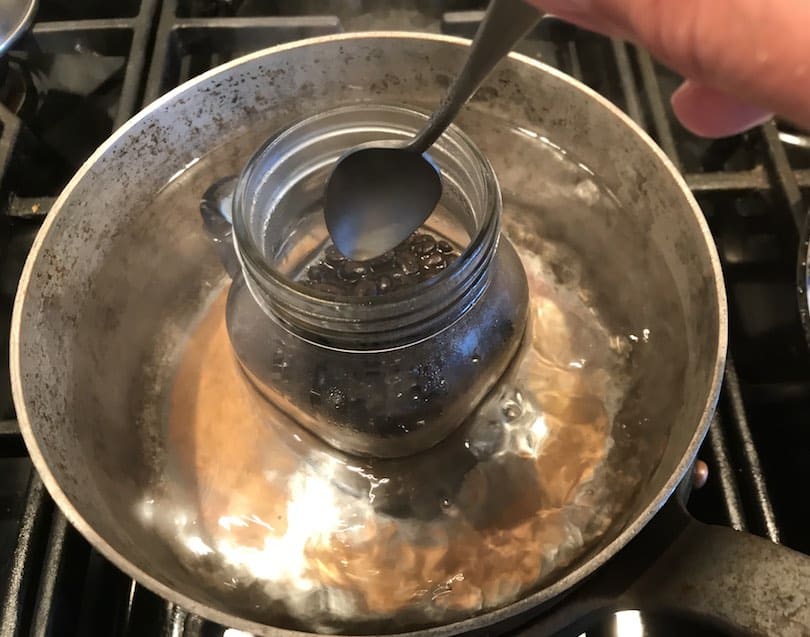
This was at about the half-hour mark. You can see at the edge of the surface that the water is starting to look a little bit like coffee:
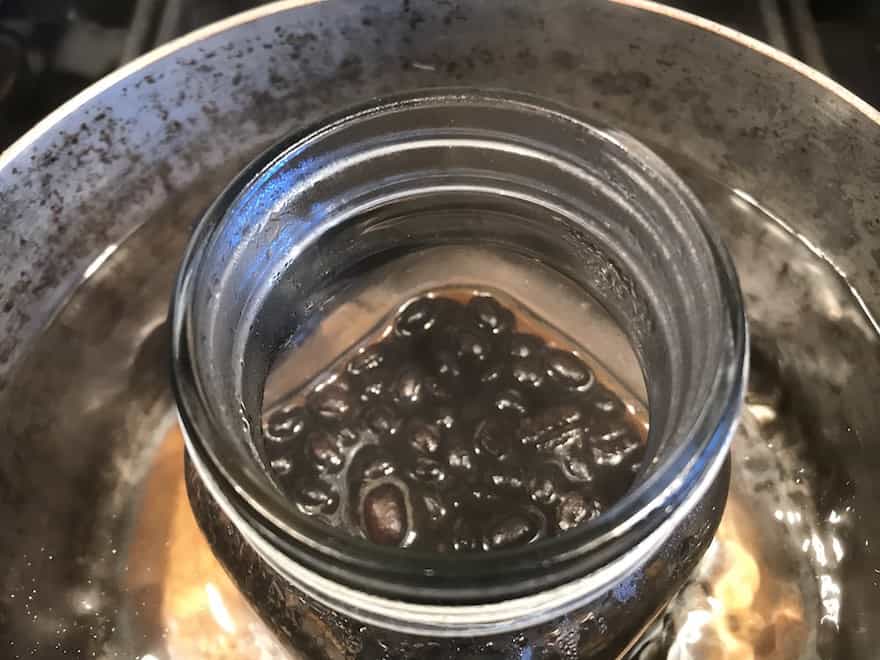
Then I did some morning yoga. During those deep breaths, I couldn’t help but notice the smell of coffee wafting through the air. And finally…
Step 5: Strain and enjoy
After one hour, I set up a coffee mug with a strainer on top so I could strain the beans.
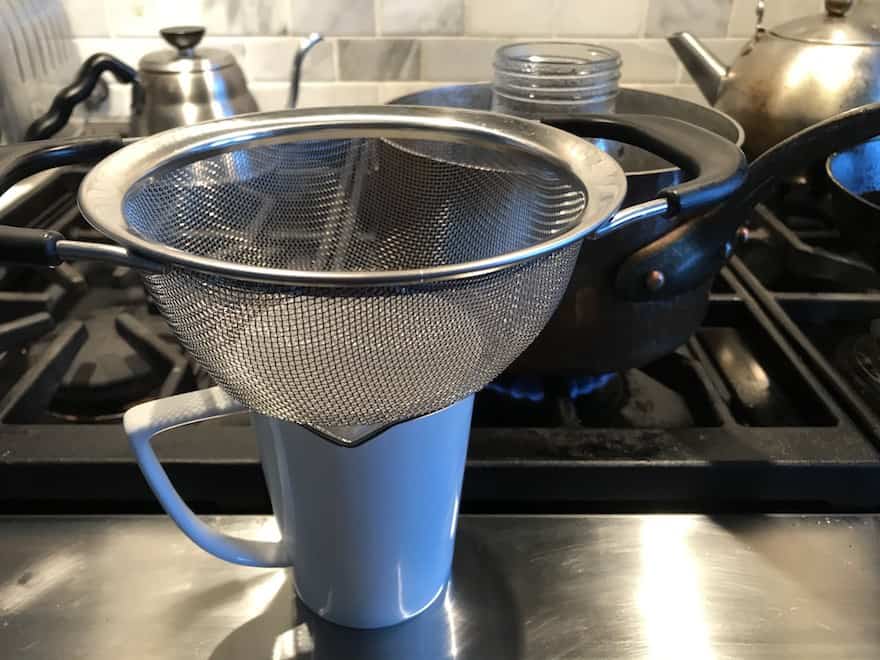
I carefully removed my jar using hot pads, and then poured the coffee into the mug through the strainer to capture the beans.
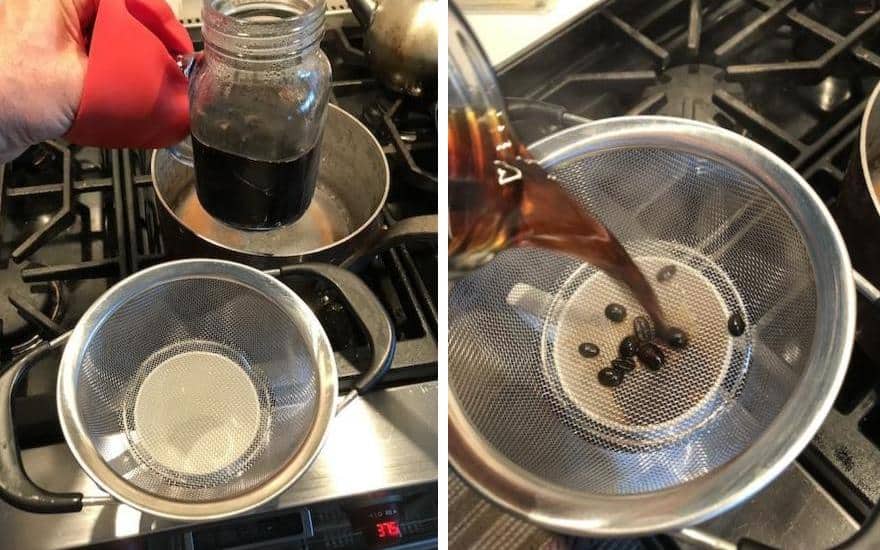
After I tossed the beans, I had a legitimate cup of coffee. I had expected it to be a bit weak, but this coffee was remarkably strong. I had to dilute it with a little hot water to get the taste I wanted.
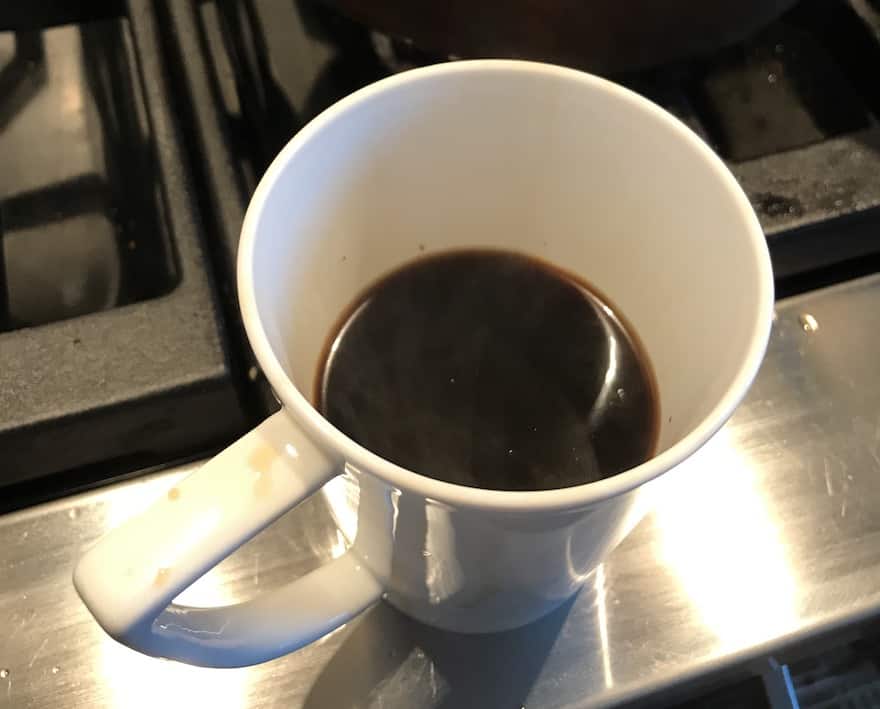
Why Make Coffee With Whole Beans?
You Don’t Have to Worry About an Uneven Grind
Most blade grinders chop the beans imperfectly, which means all those bean fragments are a different size and they are going to brew at different rates. Some will be under-extracted, weak and sour. Some will be over-extracted, strong and bitter. You kind of get the worst of both worlds. It can actually cause the cup of coffee to taste worse than if you just brew it with whole coffee beans.
So if you accidentally bought whole coffee beans, you don’t have to try to grind your coffee beans without a grinder. You might be better off brewing them whole.
Coffee Beans Deteriorate After Grinding
Oxidation. Moisture. Odors. These things sound horrible, right?
Well, when beans are ground, oxidation occurs more quickly (oxidation is what causes apples to turn brown) and this diminishes the taste of your coffee.
Moisture also weakens the flavor of coffee. (If you don’t believe me, try brewing a second pot using moist coffee grounds that have already been brewed once!) When you grind beans, you expose the surface area to humidity in the air, which is moisture. You can minimize this exposure by keeping beans completely intact. (See our earlier post: How Long Does Ground Coffee Last?)
And then there are odors. I cook with a lot of garlic. While my coffee never really tastes like garlic, apparently grinding beans does make them more susceptible to soaking up the smells of the kitchen.
All It Takes Is Time
I love brewing my coffee this way—when I have time. It is simple, dependable, and flavorful. I also now know exactly how I will make my coffee the next time I go camping, or overnight sailing, or if I am at the home of a friend who doesn’t drink coffee.
Not to mention, my taste buds have been awakened to the subtle differences in flavor offered by this brewing method. I sincerely hope you try brewing whole coffee beans yourself. It is worth the wait!

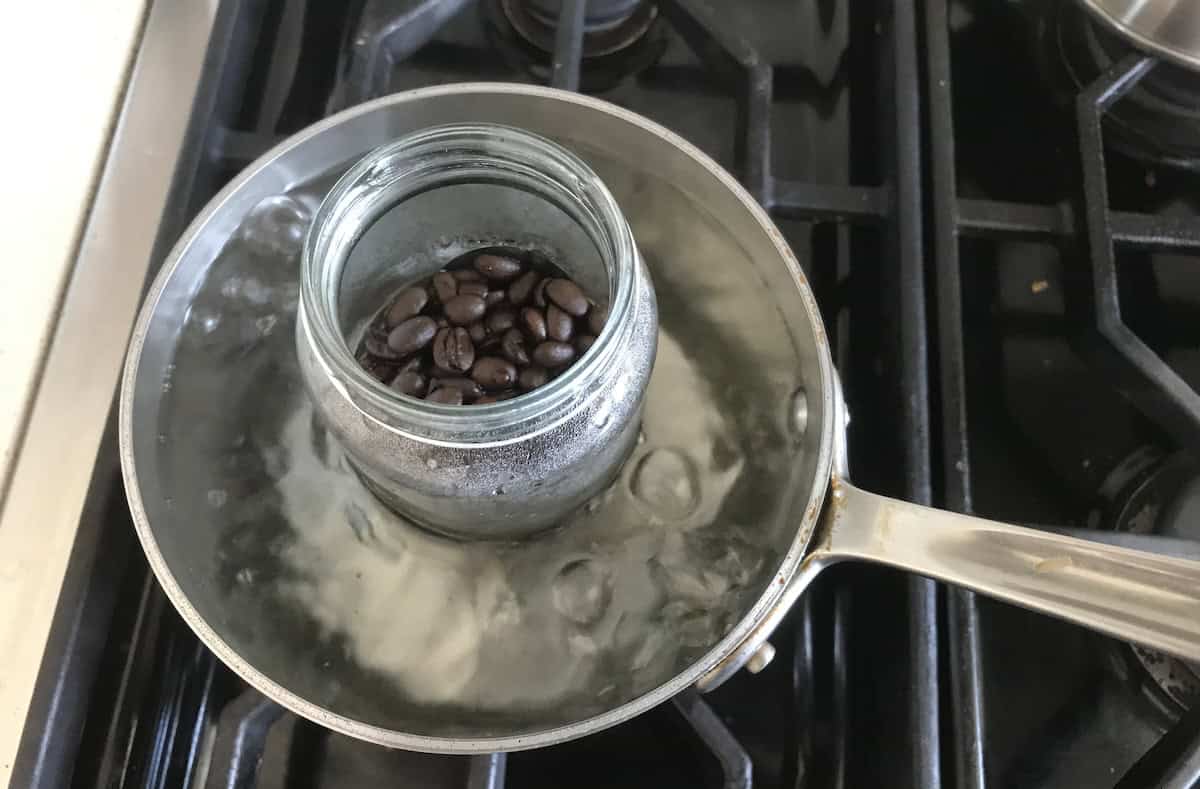

I’ve used versions of the Cuisinart Grind & Brew coffee makers for years. Grinds whole beans that fall directly into the brew basket. Makes every variety of coffee taste AWESOME!?
How do you manage to keep the jar from breaking?
Mason jars are pretty thick. They’re designed to go in boiling water, for making jam and such. Shouldn’t be a problem.
Wow! All these years of brewing coffee, I have never heard this one. Whole Bean Brewing. Who would have guessed.
Currently, I’m looking for the best way to make super strong coffee. This looks like a good option, which I can’t wait to try.
Thanks!